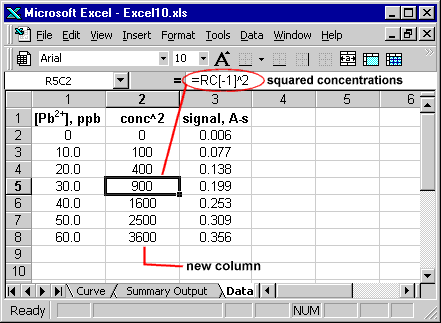

For example, a second order fit requires input data of Y, x and x².

To achieve a polynomial fit using general linear regression you must first create new workbook columns that contain the predictor (x) variable raised to powers up to the order of polynomial that you want. For more detail from the regression, such as analysis of residuals, use the general linear regression function. More complex expressions involving polynomials of more than one predictor can be achieved by using the general linear regression function. do not draw false confidence from low P values, use these to support your model only if the plot looks reasonable.choose values for the predictor (x) that are not too large as they will cause overflow with higher degree polynomials scale x down if necessary.do not extrapolate beyond the limits of observed values.the fitted model is more reliable when it is built on large numbers of observations.

(1998) and Armitage and Berry (1994) for more information. A second order (k=2) polynomial forms a quadratic expression (parabolic curve), a third order (k=3) polynomial forms a cubic expression and a fourth order (k=4) polynomial forms a quartic expression. The model is simply a general linear regression model with k predictors raised to the power of i where i=1 to k. where Y caret is the predicted outcome value for the polynomial model with regression coefficients b 1 to k for each degree and Y intercept b 0. If a polynomial model is appropriate for your study then you may use this function to fit a k order/degree polynomial to your data: Interpolation and calculation of areas under the curve are also given. This function fits a polynomial regression model to powers of a single predictor by the method of linear least squares. Menu location: Analysis_Regression and Correlation_Polynomial.


 0 kommentar(er)
0 kommentar(er)
